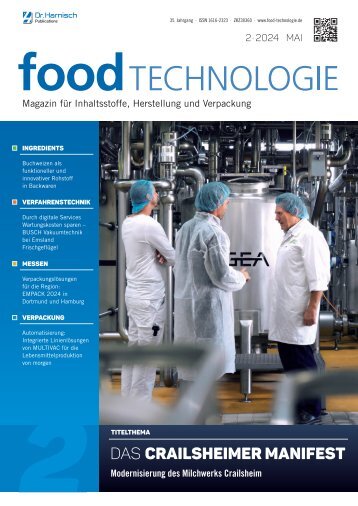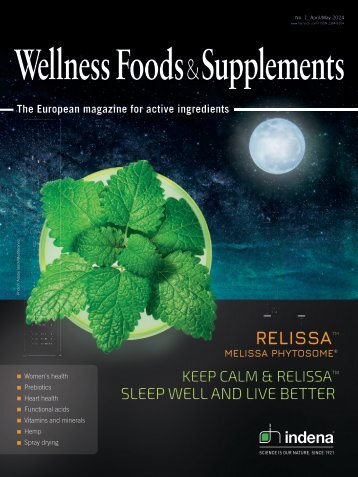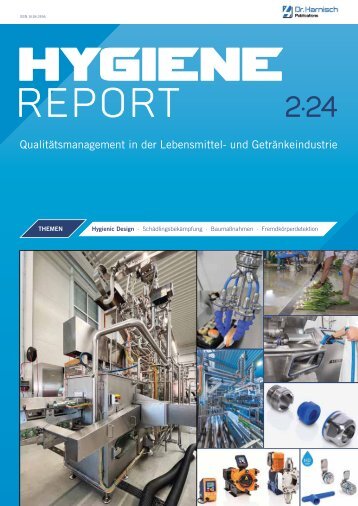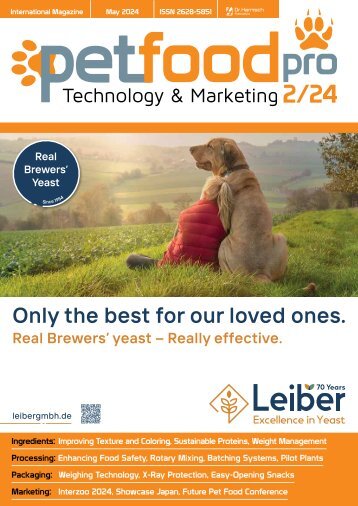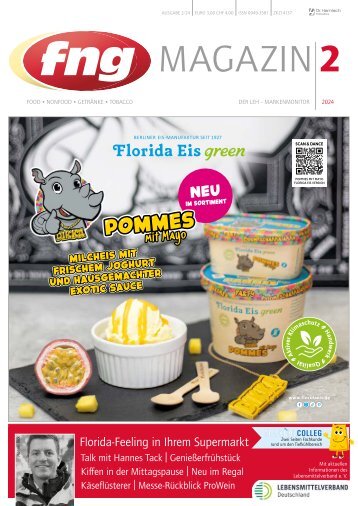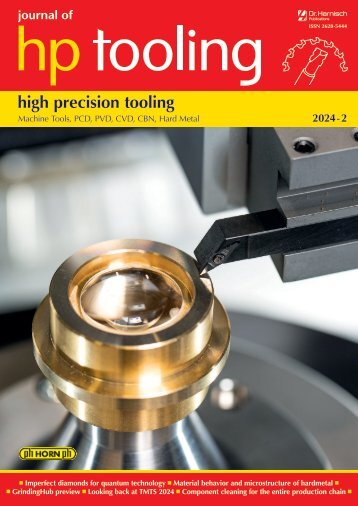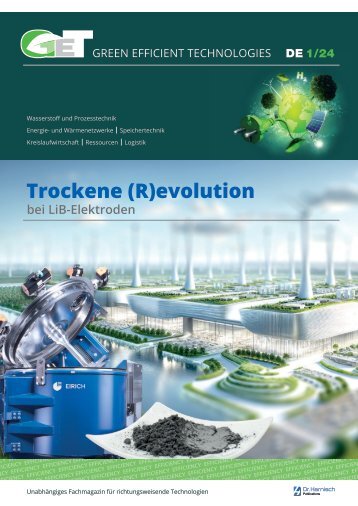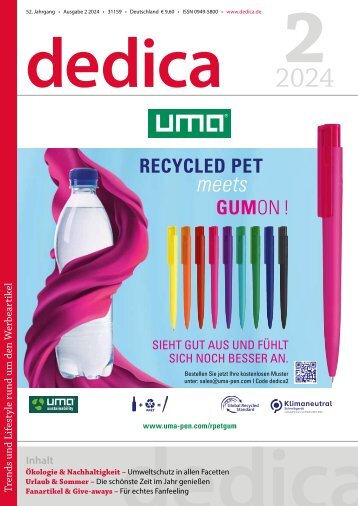food Marketing - Technology 5/2022
- Text
- Harnischcom
- Coconut
- Processes
- Packaging
- Processing
- Ingredients
- Germany
- Products
- Cinnamon
- October
- Marketing
Ingredients Challenge
Ingredients Challenge Accepted: Heat Stable Plant-Based Salami The news that plant-based diets are growing in popularity is no great surprise. The appetite for alternatives free from animal products began years ago with substitutes for nuggets and patties. However, mimicking the firm and rough texture of an Italian salami, for example, presents manufacturers with a major technological challenge. Fed up with plant-based salami that tastes and feels like dark-colored mortadella, German wheat ingredient specialist Loryma has now developed concepts using special binding agents, texturates and starter cultures to make salami that tastes great not only on bread but also pizza and other hot food. Perhaps it’s the German tradition of mostly eating cold dinners: topping slices of bread with a selection of delicacies from the cheese and deli meat counters was the motivation for the Loryma R&D team’s latest innovation, which was also inspired by Italian specialties. The global market for meat alternatives being valued at USD 5.4 billion (2021) and forecast to grow by a CAGR of 11 per cent until 2029 (1) was a motivating factor, too. The team developed a range of different wheat-based binders to suit the peculiarities of various types of sausage, particularly salami. Many plant-based salamis, whether as a sliced product or whole, have a mouthfeel very reminiscent of mortadella and are soft and elastic in texture. “But that’s not how salami actually feels, right? Plus, they’re not made to be eaten hot, which is a shame when you’re craving vegan pepperoni Norbert Klein, Head of Product Development at Loryma. pizza,” observes Loryma’s Head of Product Development, Norbert Klein. Superior plant-based salami Wheat is not necessarily the first raw material that comes to mind when one thinks of meat alternatives. Yet it’s an outstanding ingredient as a result of its technological advantages and sustainability credentials. Wheat scores highly thanks to its multifunctionality, meaning almost 99 per cent of each grain can be used through the production of co-products, ensuring a resource-saving approach to the environment. Loryma processes only European wheat, which minimizes both transport emissions and the risk of supply bottlenecks. From a technological perspective, functional ingredients from wheat can be used in the production of food, especially meat alternatives, to optimize texture and nutritional value, while being sensorially neutral. Loryma_Plant based Salami©Crespel & Deiters Combining wheat ingredients like texturates and binders is a powerful fusion. Norbert Klein and his team are constantly developing new concepts in this context – and, in some cases, also new functional blends if necessary. “A completely new approach on the ingredient side was needed for our plant-based beef jerky,” he says. “The wheatbased binder we developed for this project is also perfect for use in a heat stable salami.” It ensures heat stability and an authentic, slightly brittle texture. Starch-based binders are not suitable here as they are not particularly temperature stable. For the wheat salami, the binder partners with Lory® Tex Fibres – elongated textured wheat proteins with a fibrous, meat-like texture. The amount of water added to the dry texturates for swelling determines the anticipated firmness. 20 food Marketing & Technology • October 2022
Ingredients Loryma_Plant based Salami Pieces©Crespel & Deiters Create distinctive properties. The solution to the challenge of mimicking the rough, fibrous, almost crumbly salami texture lies mainly in the production process. “There are two options. One is quick while the other needs more time and effort, but pays off in terms of taste and properties,” Klein explains. The simple way is to add edible acids like coated citric acid, for example, and cook the salami. The more elaborate alternative is to ferment with microorganisms and let the sausage mature before cooking, just like a meat salami. “It does not work with every culture and pH value, but some conventional starter cultures from the meat industry work well. In my opinion, if you want an authentic salami texture, fermenting is the way to go,” adds Klein. To further reinforce the overall impression of a visually and sensorially authentic product, a slightly creamy fat substitute can be added, regardless of the subsequent consumption temperature. It is based on Lory® Stab, a combination of wheat gluten, wheat starches and gelling agents. The “fat” pieces are comparable to those of real salami, both visually and in terms of consistency. They do not melt in heat, which means the salami alternative can be seared without loss of quality. The nutritional values of plantbased sausages are sometimes heavily criticized because many products cannot compete with their meaty counterparts. However, wheat-based salami, produced according to Loryma’s application recommendation, can contain at least as much protein as a conventional one made from beef, thanks to soluble wheat protein broken down by enzymatic hydrolysis. No limits in taste and possibilities With nutritional values in mind, the product development team has also optimized its plant-based cold cut concept which is, with slight modification, the basis for a vegetable mortadella alternative and related varieties such as baloney. With the aim of achieving a texture that is elastic with light resistance, just like the original, two different binders from the Lory® Bind range are used. These contain wheat starches and hydrocolloids. Many vegan products on the market contain just 2.5-4 per cent protein, while meat products usually contain about 12 per cent animal protein. Klein explains: “By adding hydrolyzed wheat protein, our mortadella alternative can not only match the protein content of traditional mortadella, but also has about 5 percentage points less fat.” Exploiting the potential of wheat Loryma have a number of binders in their portfolio, but the team can create additional adaptations for specific customer projects. Efforts are being made to explore synergies too – for example, the plant-based concept for a vegan chicken breast is based on the same binder as that used in beef jerky and the salami. Of course, just like vegan mortadella, for which a clean label binder can also be used, products can be further processed, for example, for use in delicatessen salads. As all wheat ingredients are flavorneutral and odorless, they are the perfect carriers for individual flavoring. “We work in cooperation with an aroma producer and suggest flavorings for various concepts. But, of course, every producer can realize his own ideas and is invited to vary the recipe and preparation in any way,” says Klein. “That’s what I find so exciting about wheat. Although it’s a familiar and trusted ingredient, it has so much potential. As a sustainable, plant-based raw material, it is perfect for optimizing contemporary food concepts.” fmt (1) Market research report from Fortune Business Insights (2022), available online via https://www. fortunebusinessinsights.com/industry-reports/ meat-substitutes-market-100239 (latest access: 12 September 2022). food Marketing & Technology • October 2022 21
- Seite 1 und 2: 5/22 Vol. 36 • 31377 ISSN 0932-27
- Seite 3 und 4: Editorial The Dairy Dilemma There i
- Seite 5 und 6: tting Technology 9/6/22 3:14 PM Vol
- Seite 7 und 8: Cover Story against their height po
- Seite 9 und 10: ogy 9/6/22 3:14 PM 31377 Cover Stor
- Seite 11 und 12: Ingredients Online & In-Person 28 N
- Seite 13 und 14: Ingredients using modern distillati
- Seite 15 und 16: Ingredients Key No. 102117 food Mar
- Seite 17 und 18: Ingredients however, still places a
- Seite 19: Ingredients methodology, the prebio
- Seite 23 und 24: Processing food Marketing & Technol
- Seite 25 und 26: Processing If you solve the heating
- Seite 27 und 28: Transforming global food production
- Seite 29 und 30: Processing When designing equipment
- Seite 31 und 32: Processing HYGIENE TECHNOLOGY - MAD
- Seite 33 und 34: Processing dehydration, stems, peel
- Seite 35 und 36: Processing CURO-16 packing system,
- Seite 37 und 38: Packaging The Movikit software modu
- Seite 39 und 40: Packaging With the help of the auto
- Seite 41 und 42: FILTECH February 14 - 16, 2023 Colo
- Seite 43 und 44: Marketing automatically billed. In
- Seite 45 und 46: Marketing Food & Beverage Industry
- Seite 47 und 48: Marketing Visit to Equiproin in Oss
- Seite 49 und 50: Events Cinnamon oil flavoring For t
- Seite 51 und 52: Events 8-10 NOV 2022 DUBAI WORLD TR
- Seite 53 und 54: The Global Leader in Food Cutting T
Unangemessen
Laden...
Magazin per E-Mail verschicken
Laden...
Einbetten
Laden...








































